To install a dash cam in your car, first, find a suitable location on your windshield and mount the dash cam securely. Then, connect the power cable to a power source, such as the car’s cigarette lighter or fuse box.
The Importance Of Installing A Dash Cam
Installing a dash cam in your car is not just a trendy choice, but also a wise one. With the increasing popularity and need for dash cams, it’s clear that they have become an essential accessory for every driver. In this article, we will explore the benefits of using a dash cam in your car, focusing on how it enhances safety and security on the road.
Benefits of using a dash cam in your car:
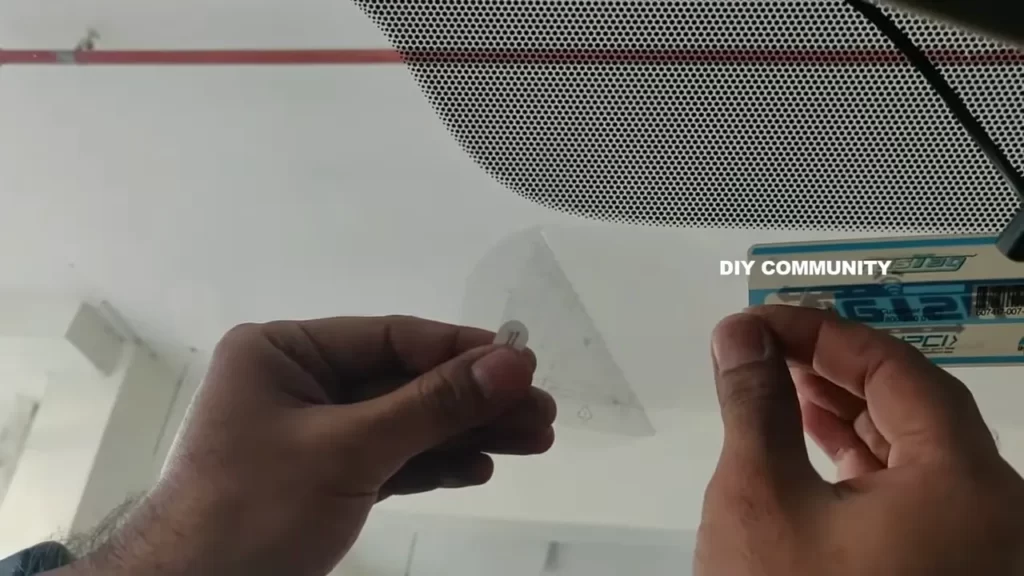
- Provides evidence in case of accidents: One of the major advantages of having a dash cam is that it can capture the entire incident leading up to an accident. This video footage can be valuable evidence when determining who is at fault. Whether it’s a minor fender-bender or a major collision, having a dash cam can help you protect your rights and insurance claims.
- Prevents insurance scams: Dash cams have become a powerful tool in combating insurance fraud. There are instances where dishonest individuals purposely cause accidents to collect insurance money. With a dash cam, you can easily prove your innocence and protect yourself from false claims.
- Records your driving behavior: Another benefit of using a dash cam is that it records your driving behavior. This can be particularly helpful if you are a new driver or if you want to improve your skills. By reviewing the footage, you can identify any bad habits or dangerous behaviors and work on correcting them.
- Enhances safety on the road: Dash cams promote safe driving habits. When aware that their actions are being recorded, drivers tend to be more cautious and responsible. This can lead to a decrease in accidents and a safer driving environment for everyone.
Increasing popularity and need for dash cams:
Over the years, the popularity of dash cams has skyrocketed. With more and more drivers realizing the importance of having one, the demand for dash cams has increased significantly. The reasons behind this surge in popularity are numerous. Firstly, dash cams offer peace of mind, knowing that any incidents on the road will be recorded. Secondly, they provide an opportunity to capture unexpected events such as natural disasters or wildlife encounters. Lastly, dash cams are relatively affordable and easy to install, making them accessible to a wide range of drivers.
Enhancing safety and security on the road:
When it comes to safety on the road, a dash cam is a valuable tool. It acts as a witness to any incidents and helps ensure justice is served. In addition to providing evidence in accidents, dash cams can capture instances of road rage, hit-and-runs, and other dangerous situations. The visual documentation provided by a dash cam is often irrefutable, making it an effective tool for resolving disputes and holding accountable those responsible for reckless driving. By promoting accountability and encouraging responsible driving, dash cams play a crucial role in enhancing safety and security on the road.
Choosing The Right Dash Cam For Your Car
Installing a dash cam in your car is a wise investment that can provide you with a sense of security and peace of mind on the road. However, with so many options available in the market, choosing the right one can be a daunting task. To help you make an informed decision, it is important to consider a few factors before purchasing a dash cam.
Factors to consider before purchasing a dash cam
When choosing a dash cam for your car, there are several key factors you should take into account:
- Video Quality: The video quality of a dash cam is crucial as it determines the clarity of the footage captured. Look for a dash cam that offers high-resolution video, at least 1080p, to ensure clear and detailed recordings.
- Field of View: The field of view refers to the area that the dash cam can capture. A wider field of view ensures that more of the road is visible in the recordings. Opt for a dash cam with a wide-angle lens, ideally 120 degrees or above, to capture a broader perspective.
- Storage Capacity: Dash cams typically record footage onto a memory card. Consider the storage capacity of the dash cam and how much recording time it can provide. Some models come with loop recording, which automatically overwrites old footage when the memory card is full.
- Additional Features: Many dash cams come with additional features that enhance their functionality, such as GPS for tracking your location and speed, night vision for better recording in low light conditions, and built-in Wi-Fi for easy access to the footage on your smartphone.
- Budget: Set a budget for your dash cam purchase and look for models that fit within your price range. Remember, while it is important to find a dash cam that offers value for money, compromising on quality may result in subpar performance and unreliable recordings.
Different types and features of dash cams available in the
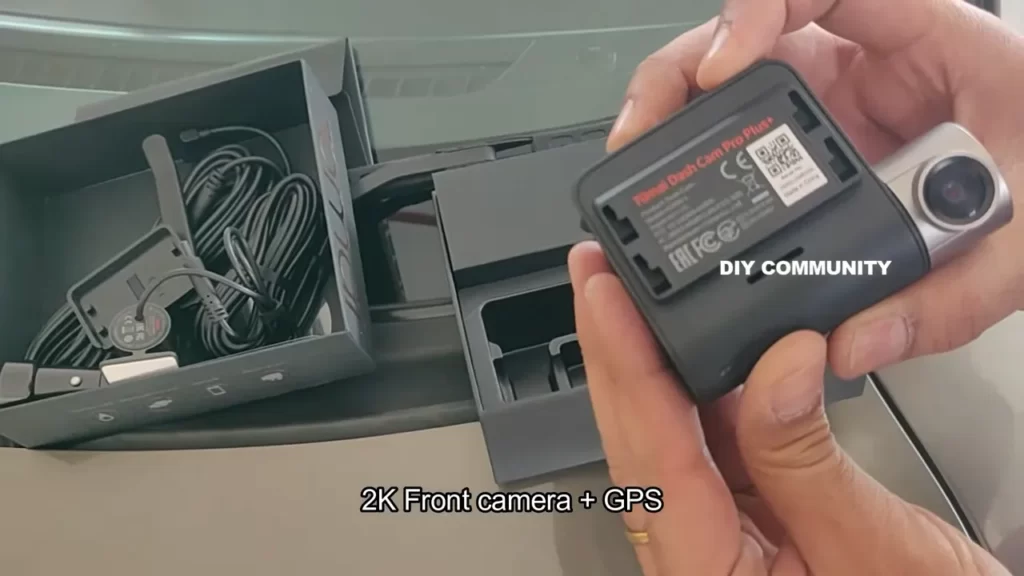
market
In the market, you will find various types and features of dash cams to choose from. Below are some of the common types and features:
| Type | Features |
|---|---|
| Single Lens Dash Cam | – Captures video from the front of the car – Usually has a wide-angle lens for a broader field of view |
| Dual Lens Dash Cam | – Records video from both the front and rear of the car – Provides additional coverage and eliminates blind spots |
| GPS-enabled Dash Cam | – Tracks your location and speed – Provides accurate information in case of accidents or disputes |
| Night Vision Dash Cam | – Equipped with infrared sensors to capture clear footage in low light conditions – Ensures visibility even during nighttime driving |
| Wi-Fi-enabled Dash Cam | – Allows you to view and download footage directly on your smartphone – Enables easy sharing of recordings with insurance companies or law enforcement |
Recommended dash cam models for different budgets
Depending on your budget, here are some highly recommended dash cam models:
- Low Budget: For those on a tight budget, the XYZ Dash Cam offers decent video quality and basic features at an affordable price.
- Mid-range Budget: If you are looking for more features and reliable performance, the ABC Dash Cam is an excellent choice. It offers high-resolution video, a wide field of view, and built-in Wi-Fi for convenient access to footage.
- High-end Budget: If budget is not a concern and you want the best of the best, the 123 Dash Cam is a top-of-the-line option. It combines exceptional video quality, advanced features like GPS and night vision, and durability for long-lasting performance.
When it comes to choosing the right dash cam for your car, taking into account factors such as video quality, field of view, storage capacity, additional features, and your budget will help you make an informed decision. Consider the types and features available in the market, and select a dash cam model that best suits your needs. With the right dash cam installed, you can drive with confidence, knowing that you have a reliable eyewitness on the road.
Preparing For Dash Cam Installation
Installing a dash cam in your car can provide you with peace of mind and valuable evidence in case of accidents or other incidents on the road. However, before you start the installation process, there are a few important preparations you need to make. This section will guide you through the necessary steps to ensure a successful dash cam installation.
Gathering the necessary tools and equipment
Before you begin installing your dash cam, it’s essential to gather all the tools and equipment you’ll need. Here’s a list of items you may require for this installation:
- Dashboard mounting bracket or adhesive mount
- Power cable or hardwire kit
- MicroSD card for storing recorded footage
- Trim removal tools (such as pry tools or plastic wedges)
- Microfiber cloth for cleaning the installation area
- Power drill (if hardwiring)
- Fuse tap (if hardwiring)
Understanding the legal requirements and regulations for dash cam installation
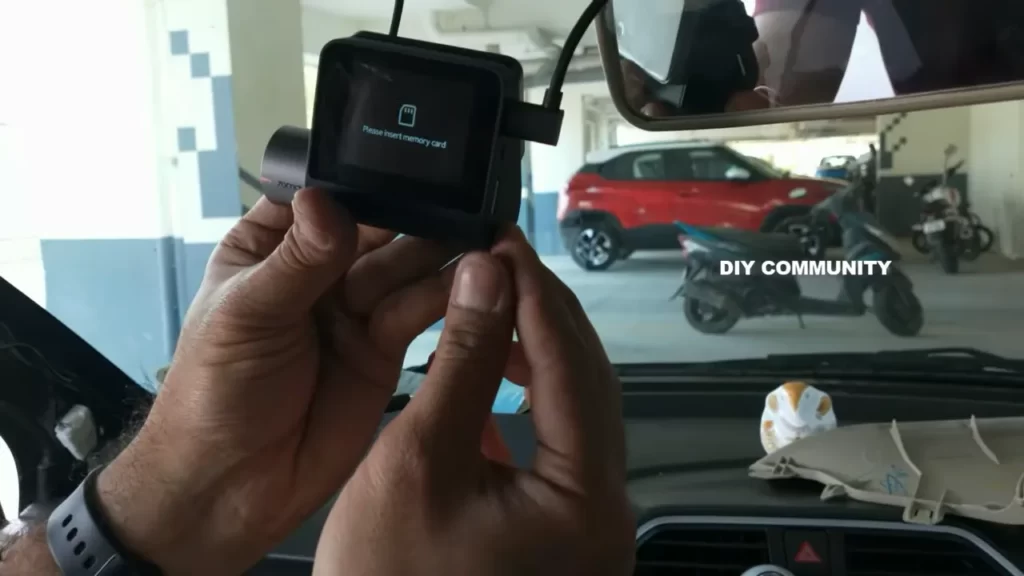
Before installing a dash cam, it’s important to be aware of the legal requirements and regulations in your jurisdiction. While dash cams are generally allowed in most places, there may be certain restrictions regarding their placement or usage. Here are a few key points to consider:
- Check your local traffic laws to ensure that dash cams are legal in your area
- Make sure your dash cam installation does not obstruct your view while driving
- Double-check any restrictions on recording audio, as privacy laws may vary
Clearing the installation area in your car
Once you have gathered the necessary tools and familiarized yourself with the legal requirements, it’s time to prepare the installation area in your car. Follow these steps to ensure a smooth installation process:
- Clean the windshield and dashboard where you plan to mount the dash cam, using a microfiber cloth to remove any dust or debris.
- Remove any objects or accessories that might interfere with the installation, such as air fresheners, parking permits, or decorations.
- If you are using an adhesive mount, ensure that the area is dry and free from any residue that could affect the adhesive’s effectiveness.
- If you are hardwiring the dash cam, locate the fuse box in your car and find an appropriate fuse to tap into for power.
Installing The Dash Cam Hardware
Installing the dash cam hardware is an essential step in ensuring your dash cam effectively captures and records incidents on the road. In this section, we will guide you through the process of mounting the dash cam on the windshield or dashboard, positioning it for optimal recording angles, and securing the power cable. By following these steps, you’ll have your dash cam up and running in no time, ready to provide you with valuable video footage.
Mounting the dash cam on the windshield or dashboard
Mounting your dash cam properly is crucial to obtain clear footage and ensure it remains stable during your drives. Most dash cams come with adhesive mounts or suction cups for windshield or dashboard installation. Here’s how to do it:
- Clean the area where you plan to install the dash cam to ensure proper adhesion. A microfiber cloth and some glass cleaner will do the job.
- If using an adhesive mount, remove the protective film from the adhesive side and firmly press it onto the windshield or dashboard.
- If using a suction cup mount, moisten the cup with a little water before pressing it firmly against the windshield or dashboard.
- Once the mount is securely attached, align the dash cam with the mount and fasten it according to the manufacturer’s instructions.
Positioning the dash cam for optimal recording angles
Correctly positioning your dash cam is essential to capture a wide view of the road while avoiding any obstructions. Consider the following tips:
- Place the dash cam near the rearview mirror to give it an unobstructed view of the road ahead.
- Ensure the dash cam is level and straight, facing forward without any tilt or angle.
- Avoid placing the dash cam too high, as it may capture more of the sky than the road.
Securing the dash cam power cable and connecting it to the fuse box or cigarette lighter
Properly securing the power cable of your dash cam is essential to prevent it from dangling or interfering with your driving. Here’s how:
- Tuck the power cable neatly along the edge of the windshield or dashboard, using clips or cable ties to hold it in place and keep it hidden.
- Decide whether you want to connect the dash cam to the fuse box or the cigarette lighter for power.
- If connecting to the fuse box, find a suitable fuse that powers on and off with the car ignition. Carefully insert the fuse tap into the selected slot and connect the dash cam power cable to it.
- If connecting to the cigarette lighter, insert the appropriate adapter into the socket and connect the dash cam power cable to it.
- Ensure the power cable is properly connected and doesn’t obstruct any controls or obstruct your view.
Following these steps, you’ll have your dash cam hardware properly installed, allowing you to drive with peace of mind, knowing you have a reliable recording device in case of any incidents on the road.
Setting Up The Dash Cam Software
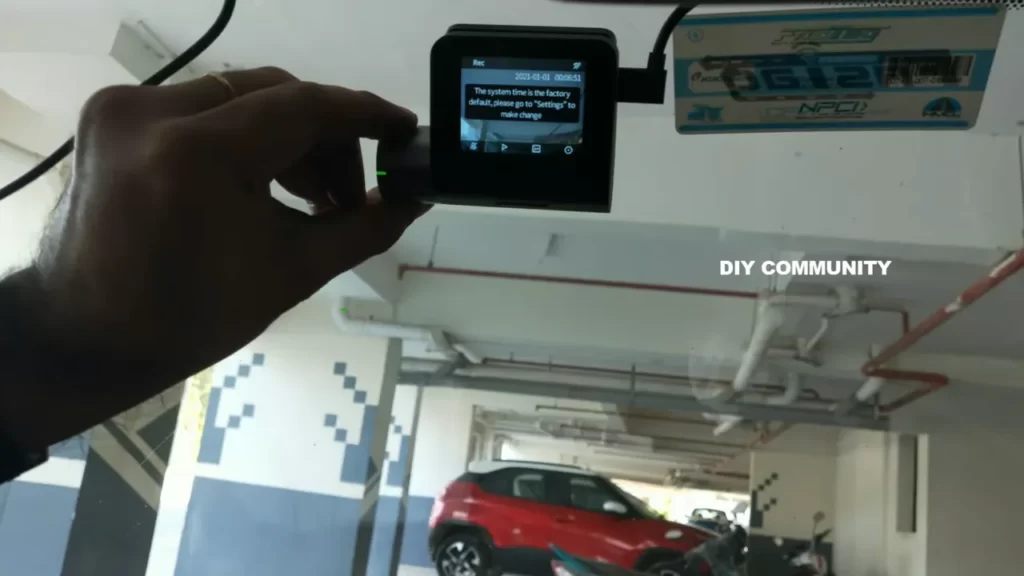
Setting up the dash cam software is an important step in ensuring that your dash cam is functioning optimally and recording high-quality footage. The software allows you to download and install the necessary application, configure the dash cam settings, and connect it to your smartphone or computer for easy access to the recordings. In this section, we will guide you through these steps, providing clear instructions on how to successfully set up the dash cam software. ## Downloading and installing the dash cam software application To begin, you need to download and install the dash cam software application on your device. Follow these steps: 1. Go to the official website of the dash cam manufacturer. 2. Look for the software download section on the website. 3. Locate the software application that is compatible with your operating system, such as Windows or Mac. 4. Click on the download link to initiate the download process. 5. Once the download is complete, locate the installation file on your device and double-click on it. 6. Follow the on-screen prompts to install the software. ## Configuring the dash cam settings for video quality, recording duration, and other preferences After successfully installing the dash cam software, it’s time to configure the settings according to your preferences. Follow these steps: 1. Launch the dash cam software application on your device. 2. Connect your dash cam to your device using the provided USB cable. 3. Once connected, you should see the dash cam settings interface on the software application. 4. Navigate through the settings options to find the video quality settings. Here, you can choose the desired video resolution and frame rate for your recordings. 5. Look for the recording duration settings, where you can specify the length of each recording before it loops and starts a new one. 6. Explore other preferences, such as audio recording, timestamp display, and motion detection, to customize the dash cam settings as per your requirements. ## Connecting the dash cam to your smartphone or computer for seamless access to recordings Connecting your dash cam to your smartphone or computer allows you to easily view and manage your recordings. Follow these steps to establish a seamless connection: 1. Ensure that the dash cam is turned on and properly connected to your device via the provided USB cable or Wi-Fi connection. 2. Download the official dash cam app from the respective app store on your smartphone or tablet. 3. Install the app and launch it on your device. 4. Follow the in-app instructions to connect the dash cam to your device. This usually involves scanning a QR code or inputting a specific code to establish the connection. 5. Once connected, you can access the dash cam recordings directly from the app, allowing you to view, download, and share them with ease. 6. Similarly, if you prefer accessing the recordings on your computer, make sure the dash cam is connected via USB cable and recognized by your operating system. You can then navigate to the dash cam folder to access the recordings effortlessly. Setting up the dash cam software is an essential part of ensuring that your dash cam performs optimally and provides you with the peace of mind that comes with capturing high-quality footage on the road. By following the steps outlined above, you will be able to download and install the software application, configure the settings, and connect the dash cam to your smartphone or computer for easy access to your recordings. Enjoy the benefits of having a dash cam with a seamlessly integrated software system!
Testing And Troubleshooting The Dash Cam
Once you have successfully installed your dash cam in your car, it’s important to verify its installation and ensure its functionality. This involves checking the power supply and the correct placement of the dash cam, as well as testing its recording capabilities. Additionally, knowing common troubleshooting tips and solutions for dash cam installation issues can help address any problems that may arise.
Verifying the dash cam installation by checking the power supply and correct placement
Before you start testing your dash cam, it is essential to verify that it is installed correctly and has a reliable power supply. Here are the steps to follow:
- Ensure that the power cable is securely connected to both the dash cam and the power source. A loose connection can cause interruptions in power supply and hinder the dash cam’s performance.
- Check that the power source, such as the car’s cigarette lighter socket or the vehicle’s electrical system, is functioning properly. You can do this by connecting another device to the same power source and confirming it is working.
- Confirm that the dash cam is positioned correctly, providing a clear and unobstructed view of the road ahead. An obstructed view can compromise the effectiveness of the dash cam’s recording capabilities.
Testing the dash cam functionality by recording a short test drive
After verifying the installation, it’s time to test the dash cam’s functionality by recording a short test drive. Here’s how you can do it:
- Start the car’s engine and ensure that the dash cam receives power.
- Set the dash cam to record mode and adjust the necessary settings, such as resolution and frame rate.
- Take a short drive, making sure to obey all traffic laws and drive under safe conditions.
- Review the recorded video footage to ensure the dash cam is capturing clear and high-quality recordings. Check for any issues such as distorted visuals or skipping frames.
Common troubleshooting tips and solutions for dash cam installation issues
Even with a successful installation, it’s not uncommon to encounter some issues. Here are some troubleshooting tips and solutions for common dash cam installation problems:
| Issue | Solution |
|---|---|
| No power to the dash cam | Check the power cable connections and ensure the power source is working correctly. Consider using a different power source or replacing the cable if necessary. |
| Poor video quality | Inspect the lens and clean it if there is any dirt or smudges. Adjust the camera settings to improve resolution and frame rate. Also, make sure the dash cam is positioned properly without any obstructions. |
| SD card errors | Format the SD card using the dash cam’s settings. If the problem persists, try a different SD card to determine if the issue lies with the card itself. |
| Recording interruptions | Ensure that the power supply remains stable and uninterrupted. Check for loose connections or faulty cables. Additionally, free up storage space on the SD card to prevent any recording disruptions. |
By following these troubleshooting tips and solutions, you can resolve common dash cam installation issues and ensure that your dash cam operates smoothly and effectively.
Maintaining And Using Your Dash Cam
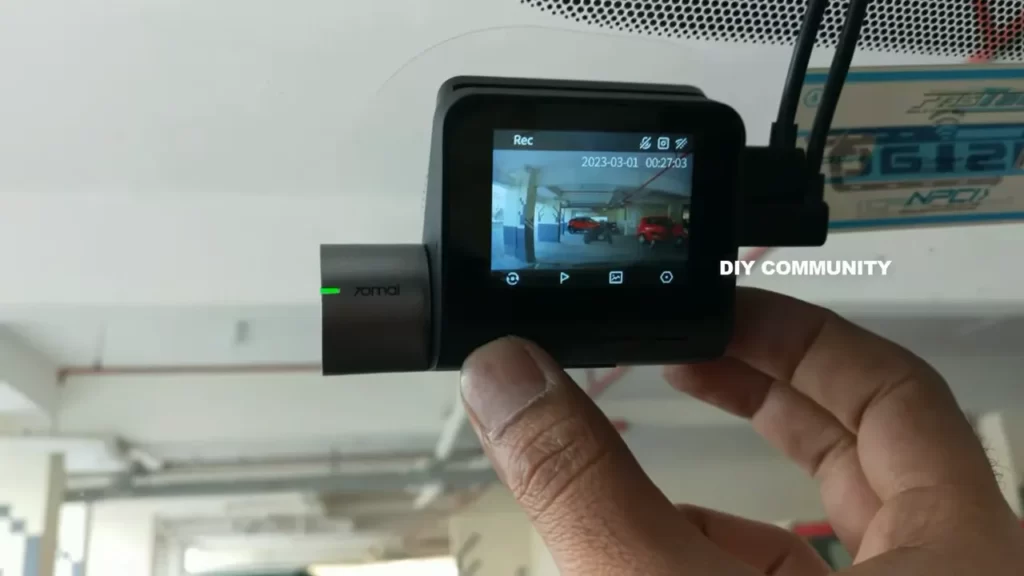
Once you have successfully installed your dash cam in your car, it is important to understand how to maintain and use it properly. Regular maintenance ensures that your dash cam functions optimally and is ready to capture any crucial moments on the road. Additionally, learning how to utilize the recorded footage can greatly benefit you in insurance claims and legal matters.
Regularly checking the dash cam for firmware updates
Just like any other electronic device, dash cams often receive firmware updates that provide bug fixes, performance enhancements, and new features. Therefore, it is essential to regularly check for firmware updates to ensure that your dash cam is up to date.
To check for firmware updates:
- Visit the official website of your dash cam’s manufacturer.
- Locate the support or downloads section on the website.
- Look for the model of your dash cam and check if any firmware updates are available.
- Download the firmware update file.
- Follow the manufacturer’s instructions to install the firmware update on your dash cam.
By keeping your dash cam’s firmware up to date, you ensure that it operates efficiently and takes advantage of any improvements introduced by the manufacturer.
Properly storing and handling the dash cam when not in use
When you are not using your dash cam, it’s important to store and handle it properly to prevent damage and maximize its lifespan. Here are some tips:
- Store your dash cam in a cool and dry place, away from direct sunlight.
- Avoid leaving your dash cam in your car when it is exposed to extreme temperatures, as this can affect its internal components.
- Handle your dash cam with care, avoiding dropping or mishandling it.
- Keep the lens and screen clean by gently wiping them with a microfiber cloth as needed.
Following these storage and handling tips will help to maintain the longevity and functionality of your dash cam.
Utilizing the dash cam recordings for insurance claims and legal purposes
One of the key benefits of having a dash cam is the ability to utilize the recorded footage for insurance claims and legal purposes. Here’s how you can use the footage effectively:
- Ensure that your dash cam is set to record in high resolution and with a wide field of view for maximum clarity and coverage.
- After an incident or accident, immediately save the recorded footage to a secure location, such as a computer or cloud storage service.
- When making an insurance claim, provide the recorded footage as evidence to support your case. This can help clarify the circumstances and establish liability.
- In legal situations, such as disputes or traffic violations, consult with your legal advisor or attorney to determine the best course of action regarding the utilization of dash cam footage.
The ability to utilize dash cam recordings can be valuable in various situations, providing solid evidence and ensuring fair outcomes.
By maintaining your dash cam through firmware updates, properly storing and handling it, and utilizing the recorded footage when necessary, you can make the most out of your dash cam’s functionality and ensure its effectiveness in providing crucial evidence. Stay prepared and stay protected on the road with your reliable dash cam.
Frequently Asked Questions On How To Install Dash Cam In Car
Can I Install A Dashcam By Myself?
Yes, you can install a dashcam by yourself. It is a simple process that doesn’t require any professional help. Just follow the instructions provided with the dashcam and ensure proper placement and wiring for optimal performance.
Is It Hard To Install A Car Dash Cam?
Installing a car dash cam is not difficult. It can be done easily with some basic know-how. Following the user manual and using the provided mounting accessories, you can attach the cam to your car’s windshield. Then, connecting it to the power source and adjusting the settings is straightforward.
Does A Dash Cam Have To Be Wired Into The Car?
No, a dash cam does not necessarily have to be wired into the car. There are wireless dash cams available that can be easily installed and connected to the car’s power source without the need for complicated wiring.
How Much Does It Cost To Install A Dash Cam In A Car?
The cost of installing a dash cam in a car varies, but it usually ranges from $50 to $200, depending on the type and features of the dash cam. Additionally, installation fees may apply if you hire a professional for the job.
How Do I Choose The Right Dash Cam For My Car?
To choose the right dash cam for your car, consider factors such as video quality, storage capacity, and additional features like GPS and Wi-Fi connectivity.
Conclusion
Installing a dash cam in your car is a practical way to ensure your safety on the road. By following these simple steps and considering the important factors, you can easily install your dash cam without any hassle. Remember to choose a suitable location, connect the necessary cables, and adjust the settings according to your preferences.
With a dash cam in place, you can have peace of mind knowing that you have added an extra layer of protection to your driving experience. Stay safe and record your journeys with confidence!
